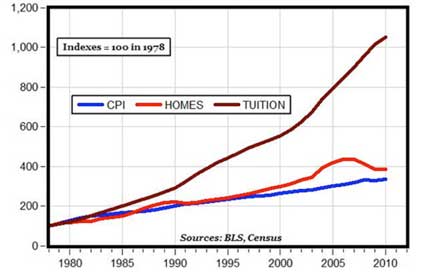Media
Big Government and the Higher Education Bubble
This past weekend I participated with some middleschoolers in a 30 hour famine to raise money for starving families. As we discussed poverty and debt the leader motioned to me saying, “After you graduate from college you will have to pay off a lot of student loan debt, like Elizabeth and I.” I then, somewhat sheepishly, admitted I didn’t have any college debt and the leader exclaimed, “What! How?”
Today, the average Pennsylvania college graduate leaves school with a bachelors degree and $28,599 in debt. So how did I get by without a penny of debt?
I went to Grove City College, a western Pennsylvania school featured in Sunday’s Pittsburgh Tribune-Review. The four-year private school, which refuses to participate in government aid programs, charges $13,598 in tuition. This compares to the average posted private school tuition of $28,500, and it’s less than the in-state tuition at taxpayer-subsidized Penn State.
How do they do it? Grove City refuses to participate in the government-driven higher education bubble that rewards schools for raising their tuition by increasing the amount of federal student aid.
Some may say it is just a coincidence that higher education costs skyrocketed when the government started handing out more grants and loans, but consider this astute point from Daniel Horowitz:
Since the DOE was created, the cost of college tuition has increased over 439% adjusted for inflation! The rate of increase is almost exactly commensurate with the rate of growth of DOE subsidization.
The higher education bubble is just one more example of how big government distorts the market and turns a good thing into an overwhelming burden. Sadly, it will probably get worse before it gets better. Remember that housing bubble that threw us into the grips of the Great Recession? The higher education bubble pales in comparison:

It is no coincidence; whenever you subsidize something you get more of it. In this case, subsidizing college tuition means more universities have a reason to raise tuition.
So what have colleges done with this extra cash? They’ve spent it on expansive building projects and additional administrative staff while four year graduation rates decline. In contrast, Grove City undertook one major construction project in the four years I was there, while 78 percent of its students graduate in four years.